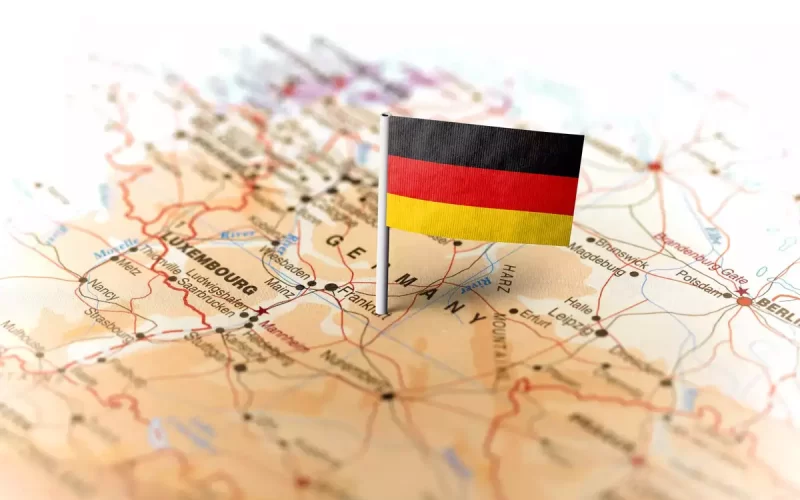German Economy Requires 288,000 Migrants Annually: Insights from a Bertelsmann Stiftung Study
Germany, Europe’s largest economy, faces a significant demographic and economic challenge: a rapidly aging population and a shrinking workforce. To sustain its economic growth, productivity, and social welfare systems, the country needs a steady influx of immigrants. A recent study by the Bertelsmann Stiftung highlights the magnitude of this requirement, emphasizing the need for 288,000 migrants annually to maintain Germany’s labor force and economic stability. This article delves into the findings of the study, explores the driving factors, and examines the implications for Germany’s policies and society.
The Demographic Crisis: A Looming Challenge
Aging Population and Workforce Decline
Germany’s demographic shift is one of the most pronounced in the developed world. According to the Federal Statistical Office (Destatis), the share of individuals aged 65 and older is projected to increase from 22% in 2020 to nearly 30% by 2035. Simultaneously, the working-age population (20 to 64 years) is expected to shrink by around 4 to 6 million people by 2035. This demographic imbalance threatens the country’s ability to sustain its economic growth and maintain its robust social welfare system.
The Dependency Ratio Problem
The dependency ratio—the proportion of non-working individuals (children and retirees) to the working-age population—is rising steadily. In 2020, there were roughly 35 retirees for every 100 working-age individuals in Germany. By 2035, this figure is expected to rise to 50. Such a shift puts immense pressure on public finances, particularly pension and healthcare systems, which are heavily reliant on contributions from a shrinking workforce.
The Bertelsmann Stiftung Study: Key Findings
Migrant Numbers Required
The Bertelsmann Stiftung study provides a detailed analysis of Germany’s labor market and demographic trends. It concludes that Germany requires an annual net migration of at least 288,000 people to stabilize its workforce by 2035. This figure is derived from the projected natural decline in the working-age population and the need to fill existing and future labor shortages.
Sources of Migration
The study highlights two primary sources of migration:
- Intra-European Migration: While the EU has traditionally been a significant source of migrants to Germany, this flow has diminished in recent years due to improved economic conditions in Eastern and Southern Europe.
- Non-European Migration: The study underscores the growing importance of attracting migrants from non-European countries to meet labor market demands, particularly in skilled professions.
Sectoral Analysis
Labor shortages are acute in certain sectors, including healthcare, information technology, engineering, and construction. For instance, Germany’s healthcare sector alone is projected to require over 500,000 additional workers by 2030 to meet the demands of an aging population.

Economic Implications of Insufficient Migration
Labor Market Strain
Without adequate migration, Germany’s labor market could face severe strain. Businesses are already reporting difficulties in filling vacancies, particularly in highly skilled and technical roles. This shortage could hamper productivity, innovation, and the overall competitiveness of German industries on the global stage.
Impact on GDP
A shrinking workforce directly impacts economic output. The study estimates that if Germany fails to meet its migration targets, the country’s GDP growth rate could slow significantly, potentially leading to stagnation by the 2030s.
Social Welfare Sustainability
Germany’s social welfare system is heavily reliant on contributions from a robust workforce. A reduced labor force would mean lower contributions, jeopardizing the sustainability of pensions, healthcare, and other welfare programs. This could lead to higher taxes or reduced benefits, both of which are politically sensitive issues.

Policy Recommendations
Attracting Skilled Migrants
The Bertelsmann Stiftung study emphasizes the need for targeted policies to attract skilled migrants. These include:
- Streamlined Visa Processes: Simplifying and expediting visa and work permit applications for high-demand professions.
- Recognition of Foreign Qualifications: Enhancing the recognition of foreign degrees and certifications to integrate migrants into the workforce more efficiently.
- Incentives for Migrants: Offering incentives such as language training, housing support, and family reunification programs to attract and retain talent.
Enhancing Integration
Successful migration policies extend beyond attracting workers; they also require effective integration strategies. Recommendations include:
- Language Training: Providing accessible and comprehensive German language courses for migrants.
- Cultural Orientation Programs: Offering programs to familiarize migrants with German culture, laws, and societal norms.
- Workplace Inclusion: Promoting diversity and inclusion in workplaces to create a supportive environment for migrants.
Expanding Domestic Workforce Participation
In addition to migration, Germany must also focus on increasing workforce participation among underrepresented groups, such as women, older workers, and people with disabilities. Policies to support this include flexible work arrangements, improved childcare facilities, and lifelong learning opportunities.

Societal Implications and Challenges
Public Opinion and Political Landscape
Migration is a contentious issue in Germany, with polarized public opinions and political debates. While the need for migration is supported by economic data, it remains a divisive topic, with concerns about cultural integration, social cohesion, and security. Addressing these concerns requires transparent communication and inclusive policymaking.
The Role of Education and Public Awareness
Educating the public about the economic and demographic realities driving the need for migration is crucial. Campaigns highlighting the contributions of migrants to the economy and society can help build broader acceptance and counter xenophobia.
Conclusion
Germany stands at a crossroads, grappling with a demographic crisis that threatens its economic stability and social welfare systems. The Bertelsmann Stiftung study underscores the urgent need for a comprehensive migration strategy to secure a sustainable future. Meeting the annual requirement of 288,000 migrants will require targeted policies, robust integration efforts, and a societal commitment to embracing diversity. With the right approach, Germany can turn this challenge into an opportunity, ensuring continued prosperity and global leadership in the decades to come.










